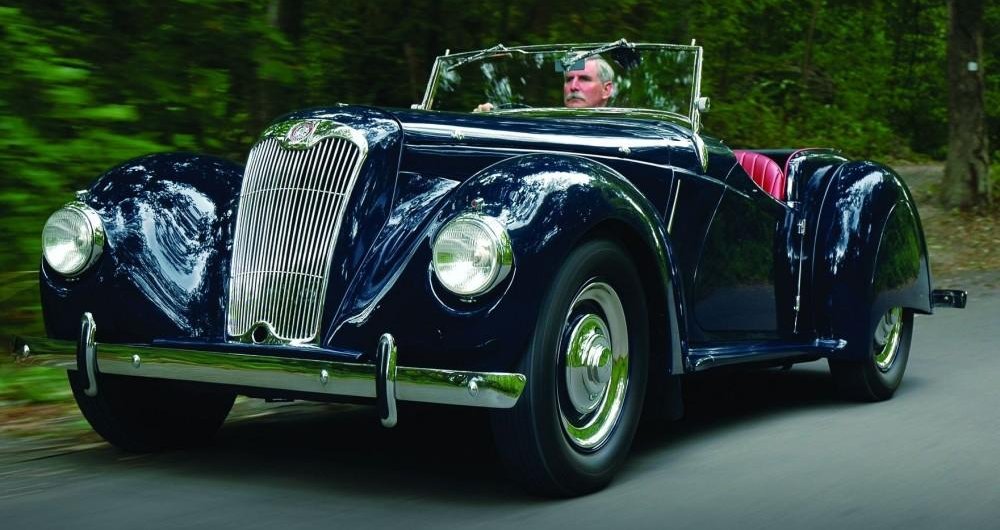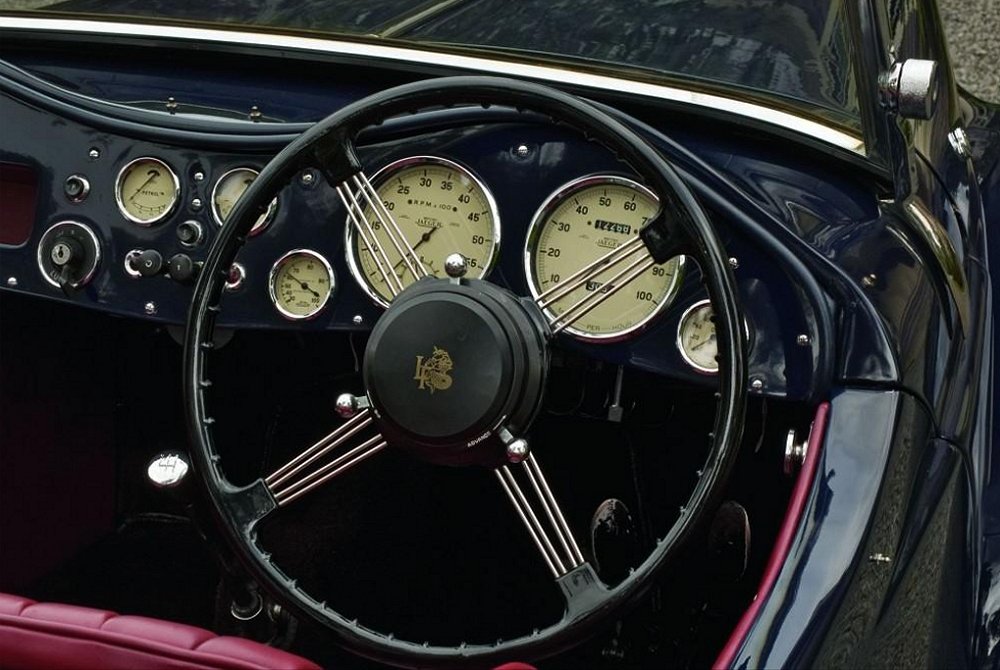Description
The Lea-Francis 14 Sports was the company’s most celebrated post-war model and a car that firmly established the marque’s reputation for building finely engineered, hand-crafted British sports cars. Produced between 1947 and the early 1950s, it was based on the same robust mechanical platform as the 14 Saloon but reimagined as a lightweight, high-performance open tourer. The 14 Sports combined elegance, agility, and genuine pace, making it one of the most desirable British sporting cars of its day and a worthy rival to models from Riley, MG, and Jaguar.
Under its sleek bonnet lay Lea-Francis’s renowned 1.8-litre four-cylinder engine, a development of the company’s pre-war twin-camshaft-in-block design. This overhead-valve unit displaced 1,767 cc and was fitted with twin SU carburettors, producing around 70 horsepower in standard form—significantly more than the saloon version. Power was transmitted through a four-speed manual gearbox with synchromesh on the upper gears, allowing for quick and precise shifts. The car could reach a top speed of around 85 mph (137 km/h) and accelerate from 0 to 60 mph in about 15 seconds, impressive figures for a small-displacement sports car of the late 1940s.
The chassis was constructed from steel box-section rails, providing excellent rigidity and balance. It used semi-elliptic leaf springs at both the front and rear, paired with hydraulic dampers to give a comfortable yet responsive ride. Hydraulic drum brakes on all four wheels provided dependable stopping power, while the steering—by cam and lever or worm and sector depending on the year—was light, accurate, and well-weighted. These mechanical qualities combined to give the 14 Sports a character that was both lively and refined, ideal for fast touring or spirited country driving.
Visually, the Lea-Francis 14 Sports was a beautifully proportioned car. Most examples were bodied by specialist coachbuilders such as Abbey Coachworks and Vulcan, giving each car a subtly individual character. The long bonnet, gently flared wings, and cutaway doors created a low, purposeful stance. The grille was tall and narrow, framed by large chromed headlamps, while the tail section tapered gracefully, housing a rear-mounted spare wheel. Wire-spoked wheels, louvred bonnet sides, and polished chrome trim completed the car’s classic post-war appearance.
The interior was crafted with the same level of care as the exterior. The cockpit featured leather bucket seats, deep carpeting, and a walnut-veneered dashboard fitted with Smiths instruments. The steering wheel was large but light, and the gear lever was ideally positioned for quick changes. The layout was simple yet elegant, focusing on functionality and comfort rather than ornamentation. The folding windscreen could be lowered for open-air motoring, and the car’s hood and side screens were well designed for weather protection, reflecting its dual nature as both a touring and sporting car.
On the road, the 14 Sports delivered a driving experience that perfectly captured the spirit of post-war motoring. The engine was flexible and willing, with a throaty exhaust note that encouraged enthusiastic driving. The car’s low weight—around 1,000 kilograms—combined with its excellent chassis balance to make it nimble and responsive through corners. The suspension was supple enough for rough British roads yet firm enough to provide stability at speed. Long-distance touring was effortless, and the car’s solid construction gave it a sense of quality and dependability that owners came to admire.
In competition, the 14 Sports enjoyed success in rallies, hill climbs, and club racing. Private owners often entered their cars in events such as the RAC Rally and various reliability trials, where the Lea-Francis’s combination of durability and performance earned it considerable respect. The company also developed special high-performance variants, including the 14 Sports “Competition” model, featuring higher compression, larger carburettors, and tuned exhaust systems. These cars could exceed 90 mph and were among the fastest four-cylinder British sports cars of their time.
Production numbers remained modest, reflecting Lea-Francis’s commitment to craftsmanship rather than volume. Each car was built largely by hand at the company’s Coventry works, and customers could specify various options for paint colour, upholstery, and trim. Between 1947 and 1953, only a few hundred examples were produced, making surviving cars today rare and highly prized.
The Lea-Francis 14 Sports was more than just a sports car—it was a symbol of post-war British optimism and engineering excellence. It offered all the excitement of open-top motoring without sacrificing refinement or comfort. Its combination of robust construction, smooth power delivery, and superb handling made it a genuine driver’s car in the truest sense.
Today, the 14 Sports is cherished by enthusiasts and collectors as one of the finest British sports cars of the late 1940s. Its blend of elegance, performance, and craftsmanship continues to impress, and well-preserved or restored examples are often seen at classic motoring events and concours gatherings. The car stands as a reminder of a time when even small manufacturers could create vehicles of remarkable quality and character through ingenuity and passion.
The Lea-Francis 14 Sports remains one of the most enduring expressions of the marque’s philosophy: to build cars that were fast, beautifully made, and deeply satisfying to drive. It captured the essence of post-war British motoring—a blend of mechanical honesty, hand-built excellence, and the sheer joy of the open road.

